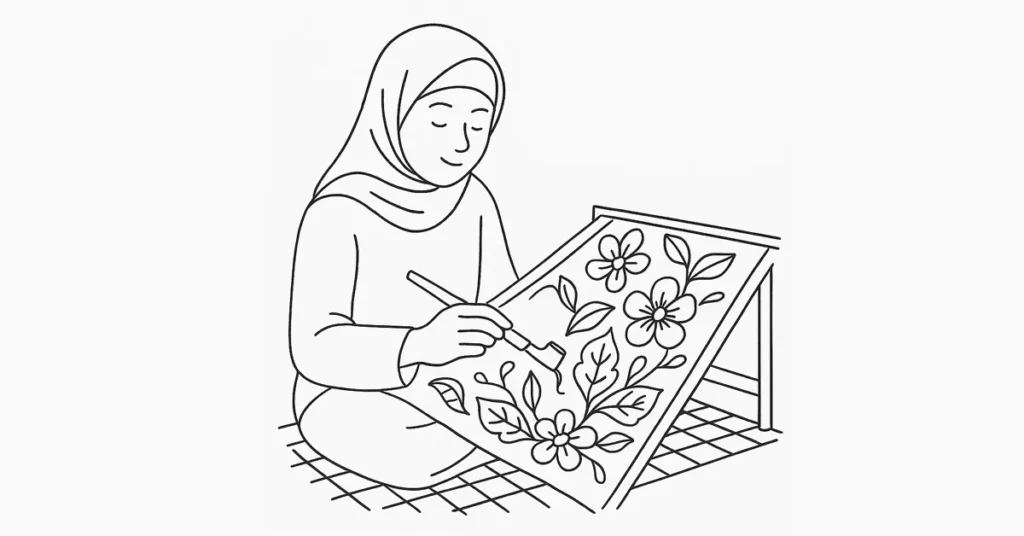Walk into a Malaysian government office on a Thursday and you’ll probably notice something: batik. A lot of it.
Since 2023, public servants have been encouraged to wear batik every Thursday.
You’ll see it in all forms: bold, subtle, floral, geometric. Some wear it in a nice tailored-fit, others keep it loose. But whether it’s paired with sneakers or court shoes, it’s there, as part of the weekly routine. For many locals, it’s familiar. For tourists, it’s often one of the first cues that Malaysia has a rich visual language worth paying attention to.
But batik is more than a uniform. And definitely more than just a print. It’s part of something deeper.
A Long Story on Fabric
Batik in Malaysia has been around for centuries. It was influenced by trade routes, neighbouring cultures, and local communities along the east coast. Over time, it became something recognisably Malaysian…. bright, floral, flowing.
Unlike some other batik traditions that favour symmetry and mythological scenes, Malaysian batik keeps it simple. You’ll find big tropical flowers, organic lines, and shapes inspired by nature. It avoids depictions of people and animals, partly due to religious considerations and instead leans into patterns that are expressive without being overly intricate.
It’s this accessibility, this lightness, that makes Malaysian batik what it is: confident, open, and a little less formal.
From Canting to Screen Print
Traditionally, batik is made with a canting, a copper tool used to apply wax to cloth by hand, line by line. It’s slow, methodical work. Other methods involve wooden blocks dipped in wax, creating repeating patterns through rhythm and pressure.
But today, not all batik is handmade… and that’s okay.
Digital batik is increasingly common. Some purists aren’t a fan, but the reality is it helps local makers reach a broader market. It makes batik more accessible both in terms of price and availability. It allows designers to experiment without being tied to a single method.
Some brands blend the two. Others go fully digital. What matters is the design intention, the way it’s worn, and the respect for its roots.
More Than Formalwear
For a long time, batik was something you wore to weddings, school ceremonies, or official events. A sign of occasion. But lately, it’s moved into more casual territory.
Today you’ll find it on jackets, pouches, tote bags, shoes, scrunchies, you name it. Local brands like Batik Boutique, Novak Batik, and MaryamBayam are putting a contemporary spin on traditional patterns, without losing their original charm.
Designers like Farah Mohan and Mandy Maung are part of this shift. They’re not trying to turn batik into streetwear just for novelty’s sake. They’re using it in thoughtful ways, as a visual language that evolves alongside the people who wear it.
It’s not a reinvention. It’s a natural progression.
A Fabric That Slows You Down
There’s something about batik that resists rush. Even when it’s digitally printed, the visual language it carries is slow. Organic. Measured.
It’s not loud. But it stays with you.
That’s part of why it still matters…. especially now, when things move quickly, when trends have short lifespans, and when handcraft is too often reduced to marketing.
Batik reminds us that culture doesn’t have to be loud to last. It just needs space.
More Than Just a Local Thing
At GetBuatan, we think batik is one of the clearest examples of what Malaysian creativity looks like, expressive.. but grounded, rooted but adaptable. It deserves more than token gestures or limited-edition drops. It deserves room to grow.
You don’t need to be Malaysian to appreciate it. You just need to be curious.
So next time you come across a batik piece whether in a boutique, a museum, or worn by someone across from you at a café. Take a closer look :).
It’s not just fabric.
– Aishah, GetBuatan
